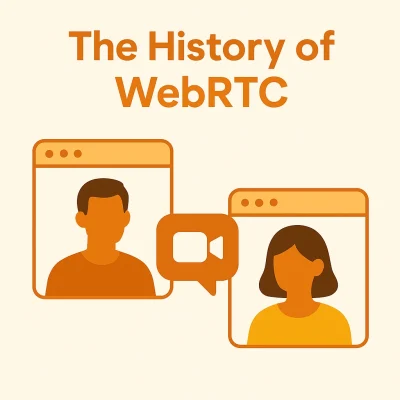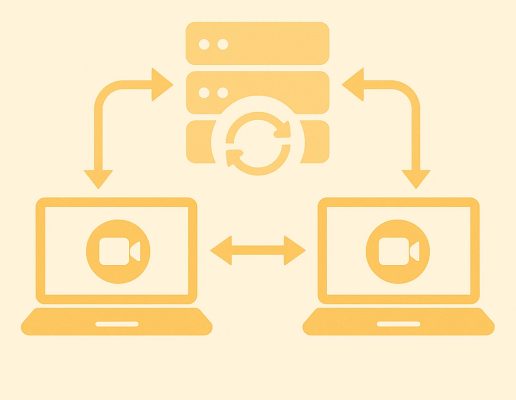The Internet of Things (IoT) has become an increasingly popular means of boosting productivity and improving efficiency in everyday tasks. IoT is simply a network of connected digital devices, sometimes called “smart” devices. Examples of IoT devices would include smart temperature gauges and sensors for monitoring inventory.
And IoT is really catching on. According to one source, up to 83% of organizations have experienced increased efficiency through IoT, so the trend isn’t likely to change anytime soon. At the same time, IoT doesn’t come cheap. Companies spent $742 billion on IoT in 2020 alone, and experts expect that number to rise considerably each year.
One of the ways companies can reduce IoT costs is through open-source IoT tools and resources. Open-source software’s base code is readily accessible, so your development team can view the code or potentially make changes as necessary for your specific needs and use cases. While open source means you can access or view the code for free, you can often also pay for professional support in case you run into trouble.
Open-source IoT tools cover a wide range. There are network connectivity protocols like OpenThread, which allow IoT devices to connect to user interfaces and to other devices within an IoT network. There are SDKs (Software Development Kits) like Nabto Edge Embedded Device SDK, which provides tools and documentation for developers who want to connect IoT devices and user interfaces through the Nabto Edge platform.
There are many other open-source IoT resources as well. Of course, finding the best tools for your company and industry comes with its own set of challenges. These top 10 open-source IoT tools and resources are a good starting point.
1. Nabto Edge Embedded Device SDK
We’ll start with the SDK for our own IoT communication platform, Nabto Edge. The Nabto Edge platform allows devices and apps within an IoT network to communicate through firewalls and without any intermediaries, such as cloud servers or databases. Once you integrate the open-source Nabto Edge Embedded Device SDK with your embedded apps, the SDK can then provide remote access to the apps through the Nabto Edge platform user interface.
So, what exactly is an embedded device app? IoT devices use embedded sensors and applications to get data. An embedded application is inextricably linked to the hardware of a device. For example, a security camera has the ability to capture and store video embedded in its hardware. If your security camera is an IoT device, it needs to be able to transfer the video it collects to other devices, such as a computer for viewing the security feed. So an IoT network needs a way to transmit information from the embedded app in the security camera to the receiving device.
To do that, most IoT networks would need to send information from the security camera or other IoT device to an intermediator like a cloud service, which then sends the information along to the receiving device, like a computer or smartphone. Nabto Edge lets you skip the cloud service step and send data directly to the receiving device. The SDK lets your embedded apps connect to the Nabto Edge platform. The SDK’s code is publicly viewable on Github, so you can see the code even before paying to connect to the Nabto platform.
2. OpenThread
OpenThread is an IoT network-connectivity protocol developed and released by Google. It pulls routers and IoT devices together into an isolated network. Since OpenThread allows you to have more than one router in a single network of devices, it keeps the entire network going even if a router breaks. The protocol is power-efficient, fast, and encrypted.
3. Mbed TLS
Mbed TLS is an open source Secure Socket Layer (SSL) and Transport Layer Security (TLS) implementation and encryption suite. Mbed, an IoT platform, uses Mbed TLS to provide cryptographic algorithms for IoT devices and systems. The Mbed TLS library uses the C programming language and is specially designed to accommodate the lightweight computing capabilities of IoT devices while keeping communication encrypted and secure.
4. Wireshark
Wireshark is one of the most well-known network analysis tools in the world. You can use it to monitor your IoT network protocols for irregularities. Wireshark can run on virtually any operating system and is completely free. Companies can use the platform to troubleshoot slow networks. Wireshark also supports decryption for common network security protocols like SSL and TLS, among many others.
5 FreeRTOS
FreeRTOS is a real-time operating system (RTOS) distributed as an open-source resource by MIT license. It provides robust libraries to give resources for connectivity and security to companies using IoT devices. Since the code is completely open source, you can also make changes as necessary for specific use cases or even contribute to the project on GitHub.
6. Mainflux
Mainflux Labs provides an open-source IoT platform for managing and controlling IoT devices. The platform uses what’s called a microservice architecture to let you manage and connect devices. With a microservice architecture, the software is divided into independent services instead of a single block of code. Microservice architecture eliminates a single point of failure and ensures that most of the services can still function even if a part of the platform needs maintenance. Mainflux is completely free and open-source, plus you can use it to connect any app or device regardless of the architectural type or style.
7. Zetta
Zetta is built on Node.js and allows you to build REST (REpresentational State Transfer) APIs so that all your devices connect using the same common API framework. APIs (Application Programming Interfaces) allow apps to communicate with one another. For example, you could use Zetta to make APIs that allow security apps, like movement sensors and alarms, to communicate with each other in a smart security system. Or you could use APIs to let an app on a phone connect remotely to a lighting control system.
Zetta optimizes APIs for real-time communication between IoT devices. Real-time communication is necessary for data streaming, in which data from an IoT device updates constantly. For example, a smart traffic-control system needs to constantly receive updates regarding traffic in different areas, so it would need data streaming.
8. Node-RED
Node-RED allows users to develop IoT applications even if they don’t know how to code. It’s a low-code programming tool with a drag-and-drop development interface. Node-RED is open-source, plus it provides a vast library of resources for developers.
9. lwIP
Lightweight IP (lwIP) is a Transmission Control Protocol (TCP)/Internet Protocol (IP) implementation. In other words, it lets devices communicate over the internet. It is open source and uses few resources, so it’s great for low-powered systems and resource-constrained IoT devices.
10. Arduino
Arduino IoT Cloud is an IoT application-development platform. It provides extensive documentation and has a free tier. Arduino is not fully hardware-agnostic, so you need to make sure that the hardware in your IoT devices is compatible with the platform.
Final Thoughts
Creating an IoT ecosystem takes a lot of work and planning. Ultimately, the success or failure of your IoT projects will depend on the quality of the tools and resources you have at your disposal. The above tools can help you at every stage of the process, making IoT development much more cost-effective, secure and efficient.







